Ryan Hall's Blog, page 171
April 20, 2017
How Runners Can Combat Spring Allergies

It’s that time of year. The pollen from the trees in front of my house is so thick it leaves layers on top of cars. My eyes start to water. I’m sneezing constantly, and running sounds miserable. Yes, it’s allergy season.
“[Allergies] can cause impairment equal to two cocktails or taking a sedative,” says Dr. Leo Galland, co-author of The Allergy Solution. While the effects of allergies on athletic performance have not been extensively studied, allergies have been shown to impact breathing ability, and decrease mental function and focus.
“The number one symptom is fatigue,” says Denise Wood, owner of Advanced Allergy Solutions, a holistic allergy clinic that provides unique anti-allergy treatments. Allergy sufferers are typically physically and emotionally irritated too. “It’s kind of like being sick, but it’s all the time.”
You wouldn’t necessarily run if you were sick, so is it safe to run if you have bad allergies? And even if it is safe, how can you make running through the symptoms more pleasant? Try these tips to keep moving even as the pollen falls.
Is it safe?
Allergies can increase the risk of exercise-induced asthma, even if you generally don’t have breathing issues when the air is fine. An asthma attack can be dangerous. “It wouldn’t be safe if it’s inducing asthma,” Wood advises.
With that exception, you can also use the same general rules as deciding to exercise while sick: Don’t do it if you have a fever or bad symptoms below the neck.
Allergies can also affect your sleep. If tired, decide whether running or rest would be best for you. But if it’s just sneezing, itchy eyes and a runny nose, then there is no a reason not to run—except for the discomfort.
RELATED: Should You Run When You’re Sick?
Tips for dealing with allergies
Allergy meds: Prescription inhalers, antihistamines and decongestants can obviously help. It is ideal to take those meds an hour or two before running. Many allergy medications can also cause fatigue, so doctors typically recommend a non-drowsy version if you intend to perform physical activity.
Over-the-counter nasal sprays, like Flonase, and eye drops can help relieve symptoms. Many are more effective before you experience symptoms rather than after.
However, if you’re planning to compete, a number of common drugs, like Sudafed, include the banned substance pseudoephedrine. Check the ingredients on your medications and the World Anti-Doping Agency’s banned drug list.
Natural remedies: Wood recommends natural anti-histamines available at health food stores, like Vitamin A, quercetin, and even nettles.
Dr. Galland suggests that taking 600 to 900mg of N-acetylcysteine, two to four times daily, can help prevent allergy symptoms. Lactobacillus probiotics can also improve your immune system function and lessen the symptoms of nasal allergies. He also notes that fish oils have a preventative effect against asthma. However none of these are going to relieve acute symptoms.
“Those aren’t quick fixes,” says Dr. Galland, but rather supplements that need to be taken regularly for their preventative effects.
You can also try wearing a handkerchief or mask over your face. Though it can be uncomfortable when running, it does help. Wood also advises that a nap may also stop the allergy response. Others find relief from acupuncture.
RELATED: 6 Ways Acupuncture Can Help Runners
Pick your exercise times: If you know what you’re allergic to, you can plan workouts to avoid any time of day when pollen counts are high. “But most people don’t know what they’re allergic to,” Wood says. They simply know what time of year they generally have problems. You can get an allergy skin test to find out which allergens affect you.
Online pollen trackers, like the American Academy of Allergy Asthma & Immunology’s or airnow.gov, can be useful for establishing patterns—though Wood cautions many online pollen trackers rarely give live data.
Pollen counts do tend to be highest from 8 a.m. to noon, peaking around 10 a.m., according to Dr. Galland. Allergens can also be worse when windy. Rain tends to tamp down some of the irritants, but mold can be highly problematic after rainstorms.
Shower and clean: Because it sticks to your clothes and skin, “you carry pollen in with you,” Dr. Galland says. It can be helpful to keep a clean house and launder clothes to avoid sitting in allergens. Flushing out your nasal cavities can also get rid of the irritants.
Even if you exercise indoors to avoid outdoor allergens, you may need to shower first, wash your hair, and change clothes to remove the pollen or spores brought in.
Other issues to consider
“I found running actually relieved the symptoms of hay fever,” Dr. Galland says. Ideally, he would take a cold shower, then go for a run, sometimes even late at night, to decrease allergic reactions and hormone response in the body.
Dr. Galland also notes that there is evidence that certain foods can cross-react with certain allergies. Raw apples, nuts, carrots, celery, and large-pit fruits can affect birch pollen allergies. Ragweed or grass allergies can react to melons, bananas, and citrus fruits. Try different foods to figure out if your allergies are exacerbated by a certain diet.
Sugar, including in alcohol, generally has an inflammatory effect and should be avoided a well.
Some studies have also found that air quality and auto emission pollution can make allergies worse. If that’s an issue, then Vitamin C can have a detoxifying effect and broccoli sprouts can help block the effects of auto exhaust. Plus, when deciding where to run, “choose a beach over a highway (if possible in your area),” Galland adds.
Wood also advises to avoid stress. Of course this is easier said than done, but stress, a lack of sleep, and overall poor health can make allergies worse. Extremely upsetting events can also trigger allergies that you might not have had before. “Then they tend to just get worse and worse,” says Wood, unless measures are taken.
The post How Runners Can Combat Spring Allergies appeared first on Competitor.com.
Women’s World Record Could Be Broken At This Year’s London Marathon
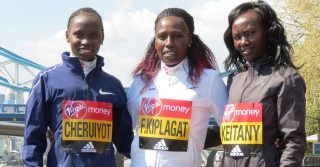
Three of the top Kenyan women running the 2017 Virgin Money London Marathon (left to right): Vivian Cheruiyot, Florence Kiplagat, and Mary Keitany. Photo: Jane Monti for Race Results Weekly
(c) 2017 Race Results Weekly, all rights reserved
With four athletes boasting sub-2:20 personal bests, and another four who have broken 2:22, Paula Radcliffe’s women’s world record in the marathon of 2:15:25 could fall at Sunday’s 37th Virgin Money London Marathon. Radcliffe set the world record at this same race in 2003.
“I think what I can say if the weather will be fine for us, also all of us cooperate, we can run the best time,” said three-time New York City Marathon champion Mary Keitany of Kenya, the fastest woman in the field with a 2:18:37 personal best. “I don’t know about the world record, but we will run the best time.”
Keitany, 35, who won the London Marathon in 2011 and 2012, and finished second in 2015, is in top form, according to her long-time manager, Gianni Demadonna, who spoke to Race Results Weekly last Saturday in Boston. She is very motivated to race on Sunday after finishing ninth at last year’s race, done-in by both a bad pre-race meal and a hard fall with about eight kilometers remaining in the race. After that performance, Kenyan selectors left her off the Rio Olympic team.
“Really, I was disappointed for not going to Rio,” Keitany told reporters at a press conference, wringing her hands and looking agitated. “I was left home. I was really discouraged.”
Using that snub to motivate her, Keitany whipped herself into top shape last summer to prepare for her New York title defense. She won the Mattoni Olomouc Half-Marathon last June in the Czech Republic on a very hot day in 1:08:53, before flying to the U.S. for a pair of races in late July and early August. At the Quad-City Times Bix 7 Mile in Davenport, Iowa, she broke Susan Chepkemei’s 12-year-old course record, then smashed the TD Beach to Beacon 10K course record in Cape Elizabeth, Maine, running away from the field in a personal best of 30:45. Those performances set her up for three and one-half minute victory in New York on a chilly and windy day.
“Really what I want to do is run really fast in London,” Keitany said.
Organizers said today that the women’s pacemakers are targeting a 69-minute first half. That should allow Keitany and Kenyan compatriots Florence Kiplagat (2:19:44 PB) and Helah Kiprop (2:21:27) to run with Ethiopians Aselefech Mergia (2:19:31), Mare Dibaba (2:19:52), Aberu Kebede (2:20:30), and Tigist Tufa (2:21:52) for a fast time. Of course, they have to cooperate in the early stages of the race to help each other maintain such a torrid pace.
“I mean, with the pacemakers, with all of us, we assist ourselves,” Keitany said. “Not one person to go alone.”
Also hoping to be in the mix for a fast time is five-time world champion, Vivian Cheruiyot of Kenya, who is making her marathon debut. The 33-year-old will have a difficult decision to make regarding the pace: Should she go with the leaders at world-record pace, or hang back and run her own race?
“I cannot say the marathon is difficult because I haven’t done the marathon,” she quipped.
No matter what the outcome, the women’s race will have a new champion. Last year’s winner, Jemima Sumgong of Kenya underwent an out-of-competition doping control in Kenya on Feb. 28, and her “A” sample came back positive for the blood booster EPO. She will not be running the race this year.
“For me it really embarrasses the sport,” said Florence Kiplagat about Sumgong’s provisional positive, which has yet to be confirmed by a test of her “B” sample. Kiplagat added, “If the truth will be like that, I’m really ashamed. I’m ashamed because we are losing top athletes like that.”
The post Women’s World Record Could Be Broken At This Year’s London Marathon appeared first on Competitor.com.
Gear Highlights From the 2017 Boston Marathon Expo

The lead up to the Boston Marathon is always a long weekend of events, shopping, dining and sightseeing. The bib pick-up and Expo is a crowded high-energy bazar of running novelties and necessities from special edition T-shirts and shoes to companies introducing new tech. Here are some gear highlights from the 2017 Boston Marathon Expo.
RELATED: 17 Shirts To Express Your Boston Marathon Spirit





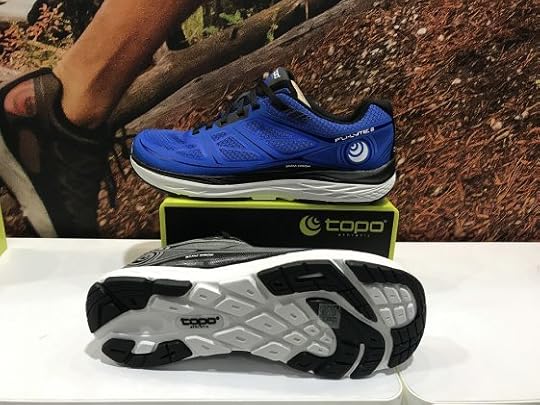
The post Gear Highlights From the 2017 Boston Marathon Expo appeared first on Competitor.com.
The New Rules Of Carbs For Runners
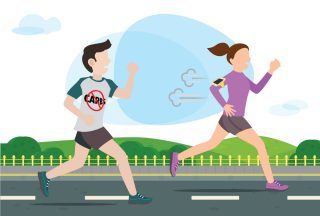

Our community is polarized. On one side are the pro-carb runners, who believe that carbs are rocket fuel for training and racing, and should be a centerpiece of the diet at all times. On the other side are the anti-carb runners, who believe that a low-carb diet is the key to cutting body fat and building endurance. The two sides bicker constantly on social media.
There is one group of runners, however, that has found a middle road between these extremes—a carbohydrate compromise, if you will, that points the way forward for all runners. I’m talking about the professionals.
Recently, I spent 18 months studying the diets of elite endurance athletes around the world for my new book, The Endurance Diet: Discover the World’s Greatest Athletes’ 5 Core Diet Habits to Look, Feel, and Perform Better. Perhaps the most interesting finding to come out of my research was that world-class racers everywhere from the United States to Japan have adopted a nuanced approach to carbohydrates that makes clear distinctions between carbs to eat and carbs to avoid as well as times to go heavy on carbs and times to go light.
These “new rules” of carbohydrate for runners are supported by the latest science and are proven to work better for all runners than do the all-or-nothing approaches that so many recreational runners take.
Carbs Can Make You Perform Better
Unlike fat and protein, carbohydrate is, for the most part, not used structurally in the body. Instead, it serves almost exclusively to supply cells with the energy they need to carry out important functions such as muscle work. Fat and protein can supply energy as well, but carbohydrate does so far more rapidly, making it the body’s go-to fuel for intense activity.
It’s no wonder, then, that piles of scientific research have shown runners and other endurance athletes perform better when their carbohydrate intake is higher. A few years ago, for example, researchers at Liverpool John Moores University tracked the diets of 257 runners during the final five weeks before the London Marathon. Those runners who ate the most carbs during this period completed the marathon on average 13.4 percent faster than the rest, irrespective of gender, age, body weight, training volume and marathon experience.
How much carbohydrate is needed to maximize endurance fitness? There’s no science-based formula that runners can use to determine their individual needs. All we know for sure is that the more you train, the more carbs you need. But counting carbs isn’t really necessary. In my research, I encountered very few elite athletes who tracked their carb intake. Instead, they just made a habit of including carb-rich foods in all of their meals and in most snacks. By doing the same, and by adjusting your overall food intake based on your activity level, you will be sure to get the right amount of carbohydrate for you.
RELATED: Are Carbohydrates Really Needed During Exercise?
Despite all of the research showing the benefits of a high carb intake on endurance performance, many runners today are being persuaded to switch to low-carb diets on the belief that reducing carb intake increases the muscles’ fat burning capacity and endurance. But studies have repeatedly demonstrated that the boost in fat-burning capacity resulting from a low-carb diet, particularly from a high-fat low-carb diet, actually impairs endurance performance. A 2014 study by Polish researchers found that four weeks on a high-fat low-carb diet reduced time-trial power by an average of 12 watts in a group of competitive mountain bikers.
Do results such as these mean that runners should eat lots of carbs all the time? No. New research has shown that endurance athletes can benefit from doing select workouts in a carbohydrate-deprived state. Most recently, French researchers observed that time-trial performance improved in cyclists who maintained a high-carb base diet but completed three morning rides per week, each preceded by a 12-hour carbohydrate fast and a carb-depleting interval workout. Interestingly, this benefit had nothing to do with fat burning. Rather, doing occasional carb-fasted workouts in the context of a high-carb diet appears to boost endurance performance by increasing aerobic capacity, which is the opposite of what a low-carb diet does.
Carb-fasted workouts are new enough that the most effective way of practicing them is not yet known. I believe that one to two of these sessions per week is a good starting point. The most convenient way to do them is first thing in the morning either before breakfast or after a no-carb breakfast. Carb-fasted workouts may take the form of high-intensity intervals or long, slow endurance runs.
RELATED: Manipulating Carbohydrate Availability To Improve Running Performance
Carbs Can Make You Leaner
For every runner who misguidedly adopts a low-carb diet in search of improved performance, there are many more who cut carbs with the goal of getting leaner and healthier. The idea that carbohydrates cause weight gain and increase the risk of developing type 2 diabetes has been promoted by popular diets such as the Atkins Diet and the Paleo Diet that have been developed outside the mainstream of nutrition science. The truth is that carbohydrate per se does not cause weight gain or increase the risk of type 2 diabetes—only low-quality carbohydrates do.
The distinction between high-quality and low-quality carbohydrate food sources is crucial. High-quality, carb-rich foods such as fruit, starchy vegetables, whole grains and dairy are proven to promote a lean body composition and good health. Low-quality, carb-rich foods—such as refined grains (white bread, white rice, regular pasta) and sweets (candy, soda)—do the opposite.

n 2015, researchers at the University of South Carolina reported that volunteers placed on a vegan diet for six months lost an average of 7.5 percent of their initial body weight without making any attempt to eat less. Carbohydrate intake actually increased on this diet. But, more importantly, diet quality increased alongside carb intake as the subjects replaced foods like pepperoni and ice cream with foods like brown rice and apples. The lesson of this study is not that a vegan diet is best for weight management but that the amount of carbohydrate in the diet is irrelevant to weight management. What matters is the quality of the food sources of carbohydrates and of the diet as a whole.
A carefully planned low-carb diet can induce weight loss and support good health, but it’s not the best approach for runners because it throws out the baby (high-quality carbs) with the bathwater (low-quality carbs).
RELATED: How Runners Can Overcome ‘Carbophobia’
Go Beyond All-Or-Nothing
It’s time for the running community to come together. We must bridge the contentious carbohydrate divide that currently hinders our progress by following the new rules that the pros now exploit to maximize the positives of carbs and minimize the negatives.
But if you can’t persuade your running buddies to overcome their own all-or-nothing thinking about carbs, don’t fight them. Just outrun them.

The New Rules
No matter what your current position on carbs is, give these rules a try and see if they don’t do for you what they already do for the best runners in the world.
Maintain a carbohydrate-centered diet (i.e., include carb-rich foods in most meals and snacks)
Do carb-fasted workouts once or twice a week
Choose high-quality food sources of carbohydrate (fruit, starchy vegetables, whole grains, and dairy)
Minimize consumption of low-quality carb sources (refined grains and sweets)
The post The New Rules Of Carbs For Runners appeared first on Competitor.com.
April 19, 2017
How Two Joffrey Ballet Dancers Add Running To Their Routines
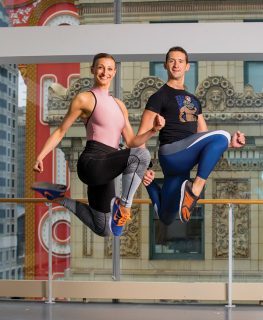
Photo: Todd Rosenberg Photography
Ballet-based barre classes have become a popular way for people to break up the monotony of run training or supply a new fitness challenge. But for Joanna Wozniak and Matthew Adamczyk, running is their way to break up dance training: Both are professional dancers at the Joffrey Ballet in Chicago, and they say running improves their day job.
Wozniak started dancing at age 7 and joined the Joffrey in 2001. She says she started with 5K events that raised money for charities—the same thing that led Adamczyk into running. He has danced since age 10 and joined the Joffrey in 2003. Both started running regularly about eight years ago.
“I also got into running partly because of our physical therapists,” Wozniak says. “A lot of them are runners, and you hear conversations about it while they’re working on you.”
For Adamczyk, dancing and running complement each other.
“Running adds strength, agility and power,” he says. “Ballet helps me with running control, breathing and posture.”
RELATED: Strength Train Like a Dancer—The Barre Circuit Workout
The two worlds overlap in other ways.
“Preparing for a performance can be the same thing as preparing for a long run or a marathon,” Wozniak says. “You have that adrenaline. You have a little bit of fear.” Unlike many other runners, though, professional dancers must account for their financial well-being any time they lace up their running shoes.
“Our body is our instrument for our job,” Adamczyk says. “The dance always comes first.” Dancers pursue their own forms of alternative exercise, often low-impact options such as ellipticals and swimming. With inherent dangers like car collisions, wrenched ankles or fractured wrists, running can be seen as a risk in the dance world.
“I definitely have heard some people say, ‘Oh, dancers aren’t supposed to run. It’s not good for their bodies,’” Wozniak says.
The more frequent but less dramatic detriment: Running tightens muscles in ways that decrease the flexibility that is crucial for dancers. Adamczyk and Wozniak ensure they maintain optimal form with rigorous pre-run and post-run regimens.
“I go for a lengthy walk before I try to run,” Adamczyk says. “It’s not like I open my door and I’m off running.”
Adamczyk says he figured out that he needed a more minimalist shoe because he’s accustomed to spending his days barefoot or in dance shoes with little support. Yet he says that the impact injuries some dancers worry about are exactly the reason he incorporates running into his life.
The repetition of his legs landing on hard surfaces mimics some of the forceful movements in jump-heavy dance programs. Plus, runs deliver longer cardio sessions.
“With ballet, it’s like doing sprints,” he says. “Yes, we dance with great intensity, but it’s never for very long. A minute and a half max.”
Wozniak says the balance is simply a priority list. “If I know that I am going to be dancing a lot, going to be doing a lot of tough exercise at work, I slow down on the running.”
In the past few years, Adamczyk and Wozniak have pushed their mileage enough to compete in local half marathons. Wozniak clocked a 2:04:49 at the 2013 Rock ‘n’ Roll Chicago Half Marathon, but she missed her goal of a sub-2 time.
The longer distances aid her dancing even though she runs just 2 or 3 miles a couple times a week during the dance season.
“Mentally, I think when you’re like, I’ve got 12 more miles to go, learning to have that strength in your mind to get your body through that is great.”
The post How Two Joffrey Ballet Dancers Add Running To Their Routines appeared first on Competitor.com.
Galen Rupp’s Post-Race Thoughts On His First Boston Marathon

Although Galen Rupp finished second at the 2017 Boston Marathon, behind Kenyan Geoffrey Kirui, his performance continues to show great promise in the marathon distance. This was his debut Boston and third marathon race overall. In this post-race interview, Rupp shares his thoughts on a second-place finish, where he had the toughest time on the course, how Boston met his expectations, and what he’ll be up to next.
RELATED: The 2017 Boston Marathon Men’s Race Recap
The post Galen Rupp’s Post-Race Thoughts On His First Boston Marathon appeared first on Competitor.com.
2017 Boston Marathon Post-Race Interview With Meb Keflezighi
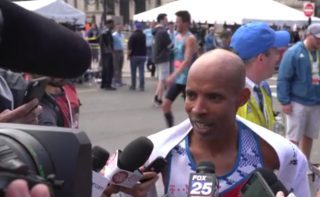
The 121st Boston Marathon also happened to be Meb Keflezighi’s last Boston Marathon as a competitive runner. The 2014 Boston champion finished 13th in 2:17:00 on Monday, and had positive remarks about his last Boston race. His parting words to the media after crossing the finish line, “Thank you everybody for all that you do for the sport, for covering my story. It’s been an amazing journey, and I hope to see you in New York. I always say run to win, but that doesn’t always mean first place…as long as we give the best that we can as a positive contributor to society, that’s a win.”
PHOTOS: 2017 Boston Marathon Men’s Race
The post 2017 Boston Marathon Post-Race Interview With Meb Keflezighi appeared first on Competitor.com.
8 Favorite Pieces Of Merino Wool Gear For Runners
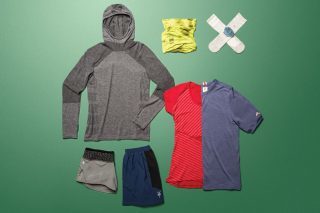
Even though wool is decidedly old school, it’s once again the hottest “new” technical fabric. OK, hot is the wrong word—because wool keeps your core temperature more stable than other fabrics, whether it’s warm or cold outside. Wool is also amazingly breathable, and fights smell and bacteria better than “technical” fabrics tend to. It’s broadened its reach from winter to year-round wear and, when blended with other materials, is no longer the same scratchy fabric found in fisherman sweaters and peacoats of yesteryear. Here’s some of our favorite merino gear for this time of year.
RELATED: 7 Pieces Of New Gear Perfect For Chasing New Goals
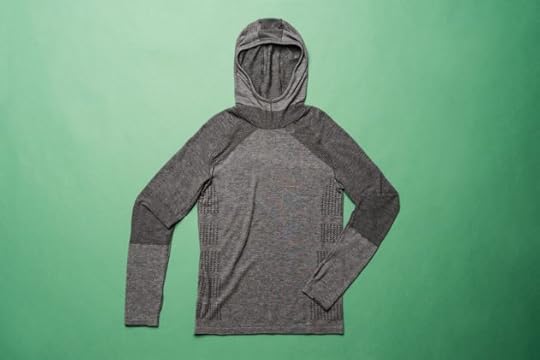







The post 8 Favorite Pieces Of Merino Wool Gear For Runners appeared first on Competitor.com.
These Photos Capture What It Feels Like To Finish Boston
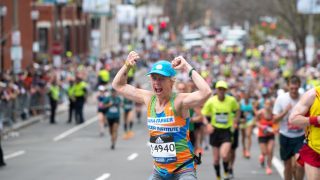
Right on Hereford, left on Boylston. Those are the famous final turns at the end of the Boston Marathon course. With that last left, runners catch a glimpse of the finish line, and the magnitude of what they are about to accomplish sets in. Here are a few photos that capture the elation and celebration of Boylston Street.
RELATED: The Best Spectator Signs From The Boston Marathon
Photos: Steve Godwin















The post These Photos Capture What It Feels Like To Finish Boston appeared first on Competitor.com.
The Best Races To Qualify For The 2018 Boston Marathon
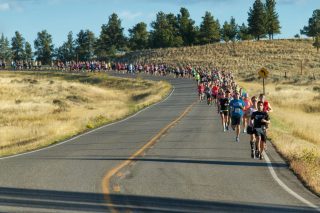
Want to Run the Boston Marathon? You can still qualify for the 2018 race—but you’d better hurry.
The 122nd running of the race takes place on April 16 next year. Runners need to run a qualifying time by mid-September at the latest for a shot at toeing the start line. The demand for the approximately 30,000 spots is so high that organizers have taken to a rolling entry schedule that rewards athletes with the fastest qualifying times.
While registration information for 2018 hasn’t been officially announced, if it follows the same procedures from this year, runners who qualify by more than 20 minutes will be given the first shot at registering. Depending on the demand, though, even people who meet qualification standards could be closed out—so it pays to run as fast as you can!
Although we’re already a quarter of the year in with fewer marathons on the calendar, you can still find quite a few that offer a good shot of hitting that time. Here are 15 upcoming races where you can aim to get that BQ.
RELATED: Why The Boston Marathon Is So Special



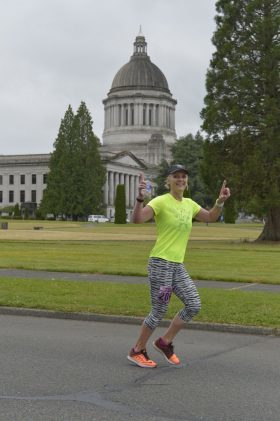


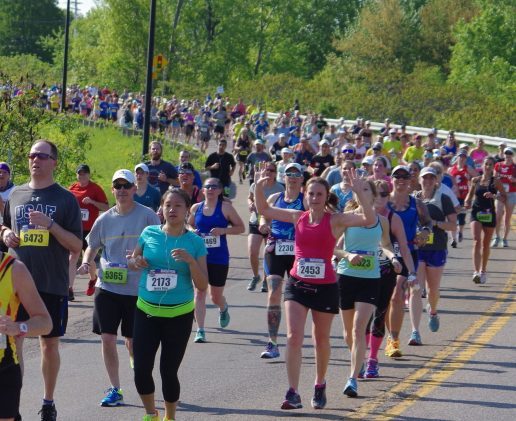

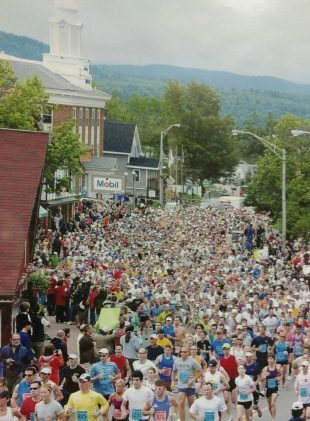

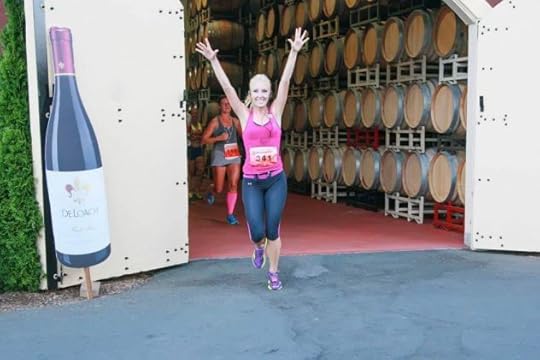
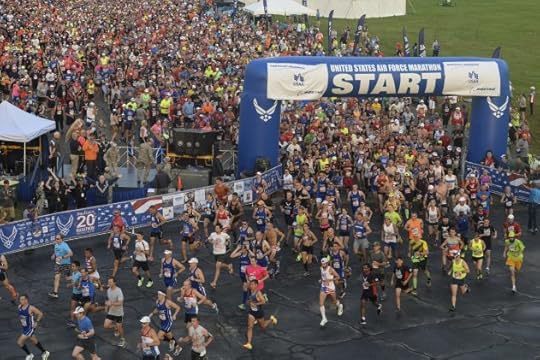

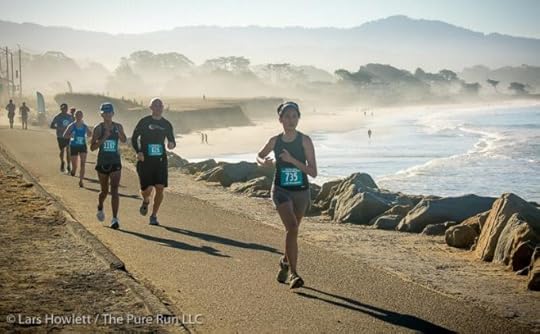

The post The Best Races To Qualify For The 2018 Boston Marathon appeared first on Competitor.com.
Ryan Hall's Blog
- Ryan Hall's profile
- 21 followers



